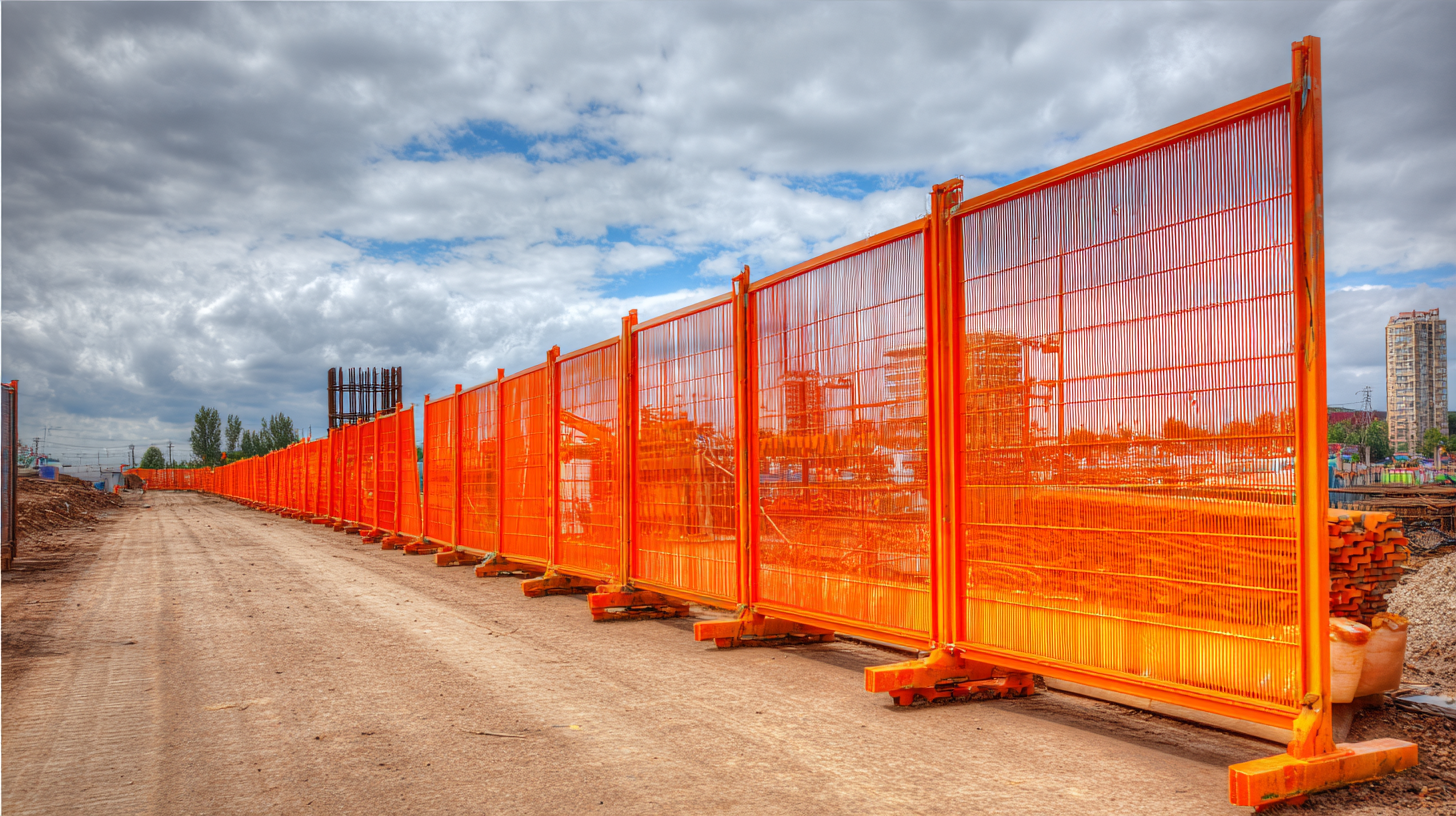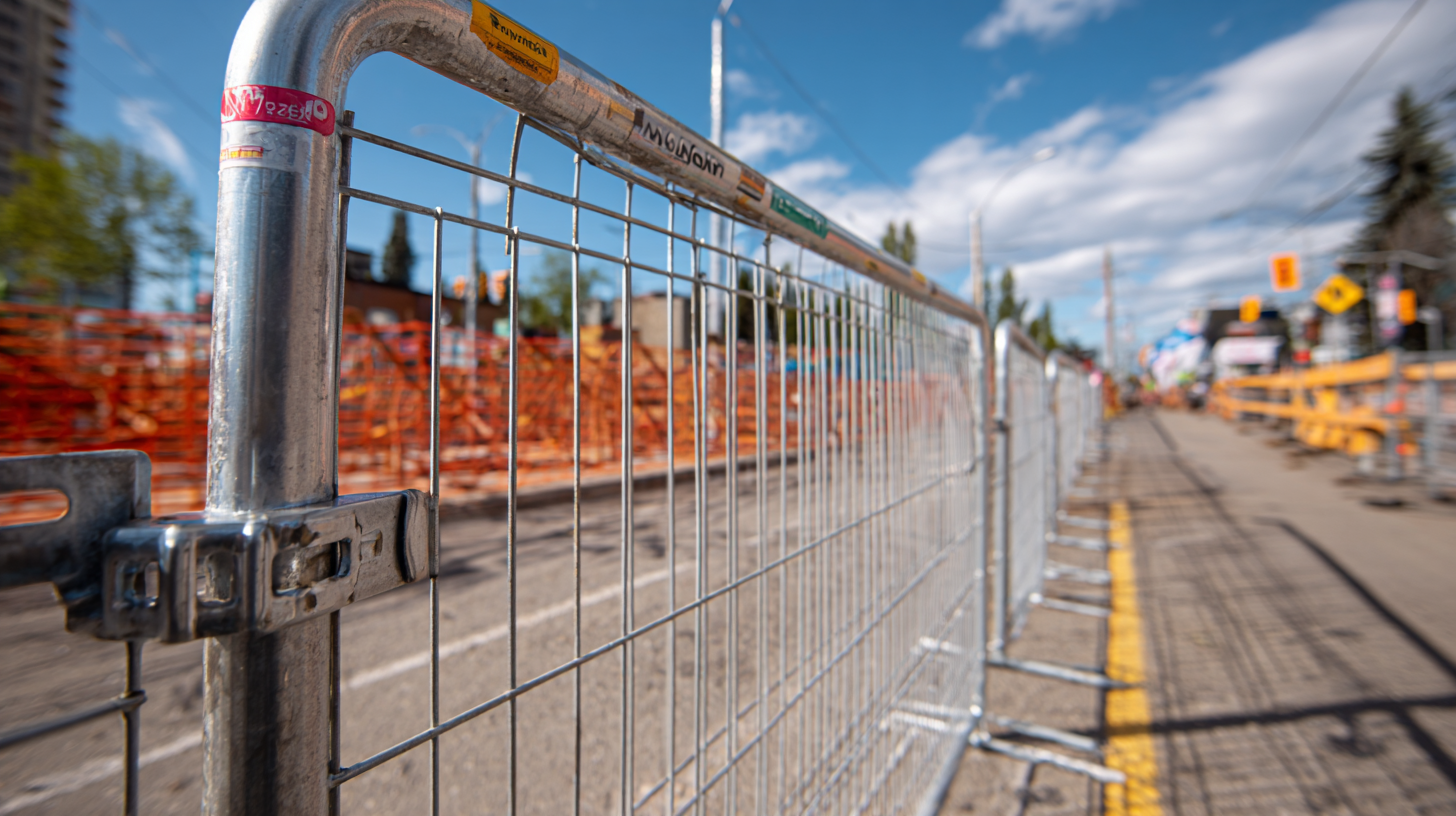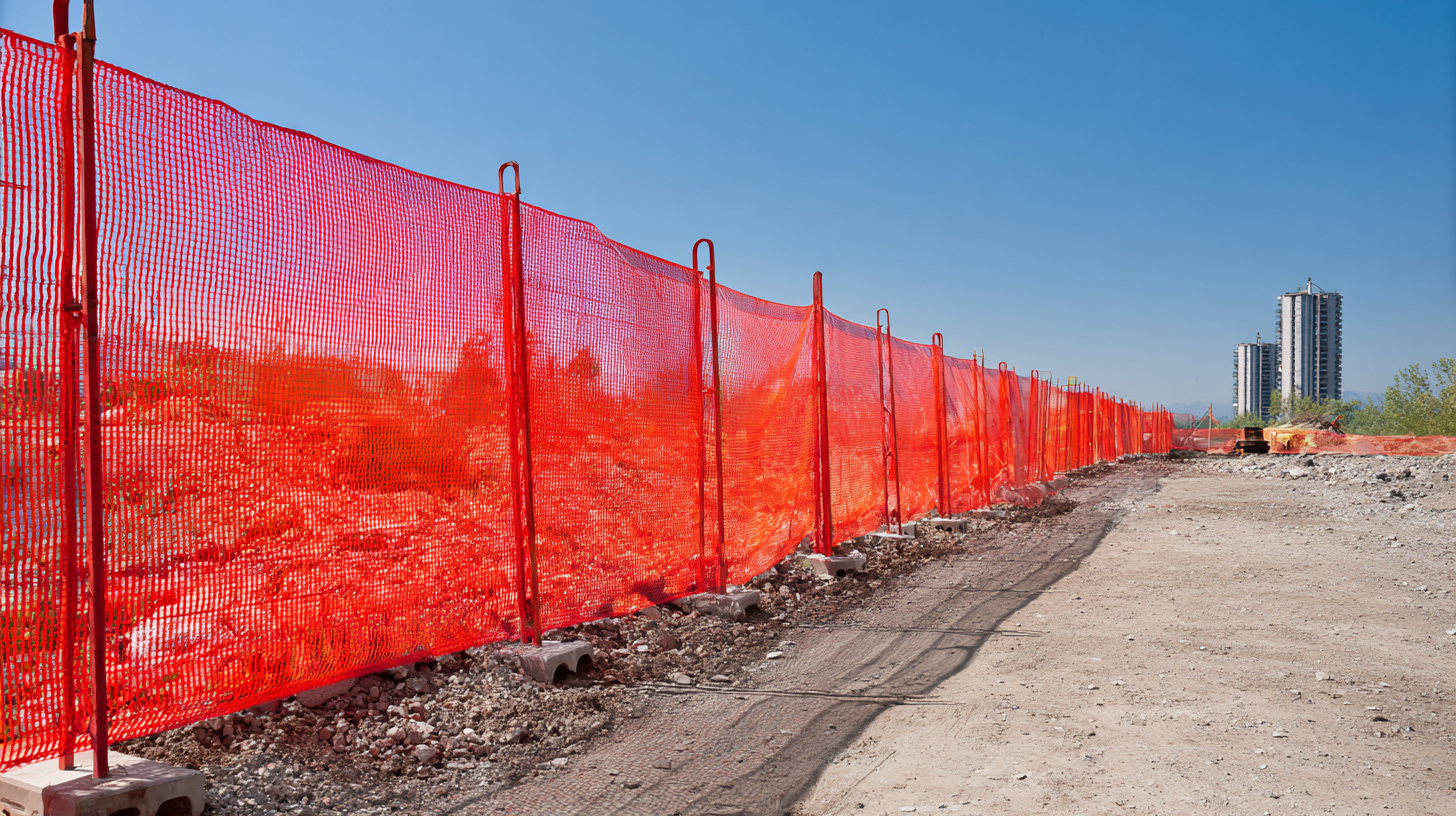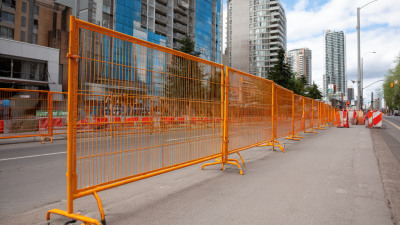How to Effectively Install a Temporary Safety Fence for Construction Sites
In the construction industry, safety is paramount, with the Bureau of Labor Statistics reporting that over 20% of worker fatalities occur in the construction sector. One of the essential elements in ensuring site safety is the use of a Temporary Safety Fence, which serves a crucial function in protecting both workers and the public from potential hazards. A well-installed temporary fence not only demarcates the construction zone but also prevents unauthorized access, thus mitigating the risk of accidents and injuries. According to a report by the Occupational Safety and Health Administration (OSHA), proper site management, including the use of effective barriers like temporary fences, can reduce workplace incidents significantly. Therefore, understanding how to effectively install a Temporary Safety Fence is vital for maintaining a secure construction environment and adhering to safety regulations.
Understanding Temporary Safety Fence Requirements and Regulations
When installing a temporary safety fence for construction sites, it is crucial to understand the specific requirements and regulations that govern its use. Temporary fencing serves as an essential barrier to protect workers, the public, and the site itself from potential hazards. Different municipalities may have varying regulations, which often dictate the type of materials allowed, the height and spacing of the fence, and the duration for which the fence can remain erected. Before commencing construction, it is advisable to check with local authorities to ensure compliance with these requirements.

Additionally, adherence to safety standards, such as those outlined by the Occupational Safety and Health Administration (OSHA), is important. These regulations may include the need for reflective materials to enhance visibility, as well as specifications for securing the fence against weather conditions. Proper installation techniques must also be observed to maintain the integrity of the fence throughout the project. By understanding and following these guidelines, construction teams can create a safer environment, minimizing risks associated with unauthorized access and ensuring that safety protocols are effectively enforced.
Choosing the Right Type of Temporary Safety Fence for Your Site
When it comes to construction sites, selecting the appropriate type of temporary safety fence is crucial for ensuring worker safety and site security. According to a report by the Occupational Safety and Health Administration (OSHA), proper fencing can reduce unauthorized access to hazardous areas, leading to a 30% decrease in on-site accidents. Different types of temporary safety fences, such as chain link, mesh barriers, and crowd control barricades, each serve distinct purposes depending on the specific needs of the site. For instance, chain link fences provide robust protection and durability, while mesh barriers are ideal for sites where visibility is necessary without compromising safety.
Additionally, the choice of materials plays a vital role in the effectiveness of a temporary safety fence. A recent study by the Construction Industry Institute indicates that sites utilizing high-quality materials not only enhance security but also reduce maintenance costs by up to 25%. When choosing a fence, consider factors like height, material strength, and installation ease to match the unique requirements of your project. Investing time in selecting the right fence can significantly reduce risks and ensure that safety regulations are met.
Temporary Safety Fences Installation Effectiveness
This chart displays the effectiveness rating of various aspects of temporary safety fences commonly used in construction sites. Ratings are measured on a scale from 1 to 10, demonstrating how factors like construction safety, cost efficiency, and ease of installation contribute to the overall effectiveness of such safety measures.
Step-by-Step Guide to Installing a Temporary Safety Fence
Installing a temporary safety fence at a construction site is crucial for ensuring both site security and worker safety. According to the Occupational Safety and Health Administration (OSHA), over 21,000 injuries occur annually on construction sites due to unsecured areas, highlighting the necessity of erecting a substantial barrier. Following a systematic approach will not only enhance safety but also compliance with regulations.
To begin, assess the site to determine the perimeter that requires fencing. It’s essential to use materials that meet local regulations; for instance, chain-link fencing is commonly recommended due to its durability and visibility. Next, secure fence posts firmly in the ground, ensuring they stand at least 6 feet high to deter unauthorized access. According to the National Institute for Occupational Safety and Health (NIOSH), a well-installed fence reduces access by up to 90%, significantly lowering the risk of accidents. Ensure that gates are installed in high-traffic areas and are kept locked when not in use to prevent unauthorized entry.
Once the fence is installed, it is vital to conduct regular inspections to maintain its integrity. OSHA reports that nearly 50% of safety violations stem from poor maintenance of temporary structures. Providing adequate signage and routine checks can bolster the safety measures in place, protecting both the site’s workers and the general public.

Tips for Maintaining and Inspecting Your Temporary Safety Fence
When installing a temporary safety fence for construction sites, it's crucial not only to set it up properly but also to ensure its longevity and effectiveness through regular maintenance and inspection. A well-maintained fence can significantly enhance site safety by preventing unauthorized access and protecting workers.
One essential tip for maintaining your temporary safety fence is to regularly inspect for any signs of wear and tear. Look for loose panels, bent poles, or broken ties. Spotting these issues early can help you address them before they compromise the fence’s integrity. Additionally, consider checking the stability of the posts. If they show signs of shifting, reinforcing them can prevent potential hazards caused by an unstable fence.
Another important aspect is ensuring the fence remains clear of debris such as tools, materials, or overgrown vegetation. These obstructions can weaken the fence or make it less visible, potentially endangering both workers and passersby. Regularly clearing the area around the fence and conducting inspections after adverse weather conditions can help maintain its condition and effectiveness throughout the construction project.
Best Practices for Removing and Storing Temporary Safety Fencing
When it comes to temporary safety fencing for construction sites, proper removal and storage are crucial for maintaining safety and efficiency. Following rigorous safety standards and industry best practices not only ensures the protection of workers but also prevents hazards that may arise from improperly stored materials. After a temporary safety fence has served its purpose, it should be carefully dismantled, taking care to avoid damage to the materials. Each component should be cleaned to remove any debris that could compromise its integrity during storage.
For effective storage, all fencing materials should be organized and labeled clearly. It is advisable to store them in a dry and secure location that minimizes the risk of deterioration. Regular inspections of these materials while in storage help identify any wear or damage, allowing for timely repairs or replacements. Implementing these best practices not only safeguards resources but also contributes to the overall safety of the site and surrounding community during construction activities.
How to Effectively Install a Temporary Safety Fence for Construction Sites - Best Practices for Removing and Storing Temporary Safety Fencing
| Dimension |
Description |
Best Practices |
| Height |
Typically ranges from 4 to 6 feet |
Ensure visibility and deterrence from entry |
| Material |
Commonly made of chain-link or plastic |
Select based on site durability and visibility needs |
| Installation Duration |
Installation typically takes 1-2 hours |
Assign team pre-trained for rapid setup |
| Storage Condition |
Store in a dry and secure location |
Avoid moisture to prevent rust or damage |
| Removal Procedure |
Requires team coordination for safe take-down |
Follow safety protocols to prevent injuries |
| Inspection Frequency |
Recommended at least weekly |
Look for damages or displacements |

Home
About Us
Products
Customize
Application
Support
Blog
Contact Us








